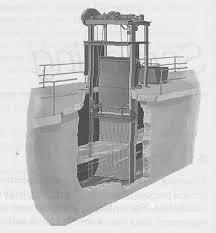Comminutors can create operation and maintenance problems in downstream processes. While shredding solids eliminates the problem of handling screening materials at the head of the plant, problems inherent to the use of comminutors, such as the decreased quality of digested biosolids and the accumulation of rags on air diffusers, have lessened the popularity of this technology.
Comminutors are generally avoided in new designs and are being removed from many existing plants. Grinders are greatly affected by grit and other solids. As such, they require routine inspection every six months and replacement of bearings and cutter teeth every one to three years.
Grit Removal Process
Grit includes sand, gravel, cinder, or other heavy solid materials that are heavier (higher specific gravity) than the organic biodegradable solids in the waste-water.
Grit also includes eggshells, bone chips, seeds, coffee grounds, and large organic particles, such as food waste. Removal of grit prevents unnecessary abrasion and wear of mechanical equipment, grit deposition in pipelines and channels, and accumulation of grit in anaerobic digesters and aeration basins.
Grit removal facilities typically precede primary clarification, and follow screening and comminution. This prevents large solids from interfering with grit handling equipment. In secondary treatment plants without primary clarification, grit removal should precede aeration (Metcalf and Eddy, 1991).
Many types of grit removal systems exist, including aerated grit chambers, vortex-type (paddle or jet-induced vortex) grit removal systems, detritus tanks (short-term sedimentation basins), horizontal flow grit chambers (velocity-controlled channel), and hydrocyclones (cyclonic inertial separation).
Read Also: Types and Sources of Waste-Water
Various factors must be taken into consideration when selecting a grit removal process, including the quantity and characteristics of grit, potential adverse effects on downstream processes, head loss requirements, space requirements, removal efficiency, organic content, and cost.
The type of grit removal system chosen for a specific facility should be the one that best balances these different considerations. Specifics on the different types of grit removal systems are provided below
Aerated Grit Chamber
In aerated grit chambers, grit is removed by causing the waste-water to flow in a spiral pattern, as shown in the figure below. Air is introduced in the grit chamber along one side, causing a perpendicular spiral velocity pattern to flow through the tank.
Heavier particles are accelerated and diverge from the streamlines, dropping to the bottom of the tank, while lighter organic particles are suspended and eventually carried out of the tank.

Vortex-Type Grit Chamber
The vortex-type grit chamber consists of a cylindrical tank in which the flow enters tangentially, creating a vortex flow pattern. Grit settles by gravity into the bottom of the tank (in a grit hopper) while effluent exits at the top of the tank.
The grit that settles into the grit hopper may be removed by a grit pump or an air lift pump.
Horizontal Flow Grit Chamber
The horizontal flow grit chamber is the oldest type of grit removal system. Grit is removed by maintaining a constant upstream velocity of m/s (1 ft/s). Velocity is controlled by proportional weirs or rectangular control sections, such as Parshall flumes.
In this system, heavier grit particles settle to the bottom of the channel, while lighter organic particles remain suspended or are re-suspended and transported out of the channel.
Grit is removed by a conveyor with scrapers, buckets, or plows. Screw conveyors or bucket elevators are used to elevate the grit for washing or disposal. In smaller plants, grit chambers are often cleaned manually.
Read Also: Estimating Waste-water Flow Rates from Water Supply Data
Read Also: Jersey Cow: Grooming and Care Guide

